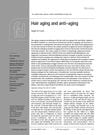Stem Cell Tourism: Unproven Therapies and Emotional Decisions
January 2014
in “
Elsevier eBooks
”
TLDR People travel abroad and pay a lot for unproven stem cell treatments, hoping for cures.
Stem cell tourism referred to the practice where patients paid large sums to private clinics for unproven stem cell therapies, often due to desperation from conventional medicine's failure. This was particularly emotional for parents of sick children, who had to balance seeking the best care with protecting their children from risks. Clinics, often abroad, advertised treatments for a wide range of conditions, including diabetes, stroke, spinal cord injuries, cerebral palsy, ALS, and even cosmetic issues like wrinkles and age-related hair loss in men.





